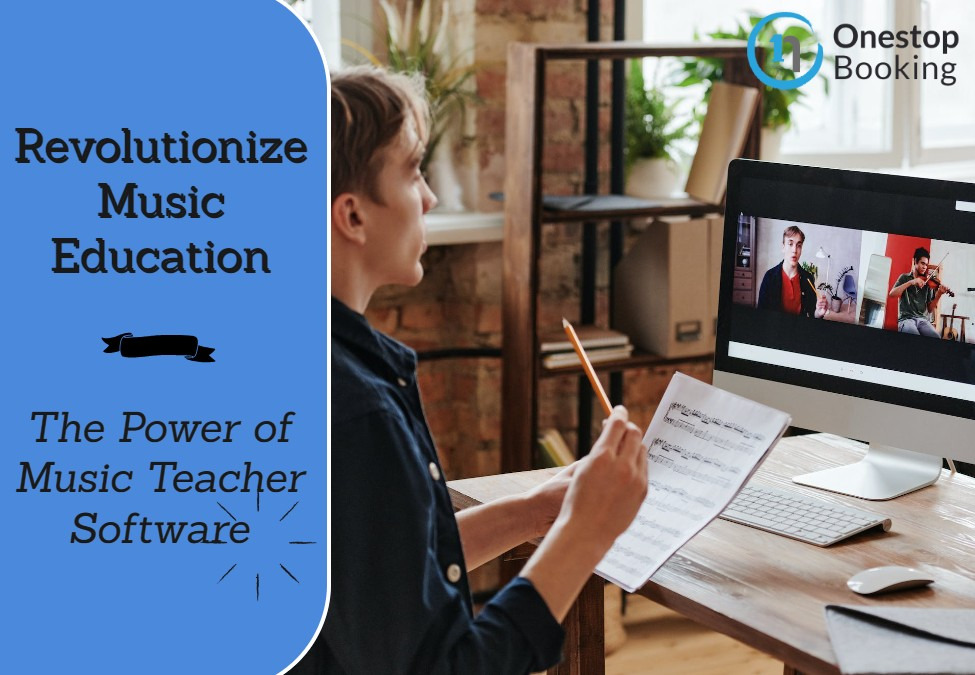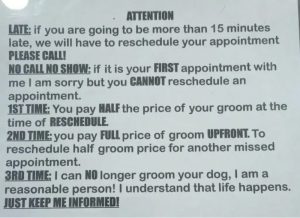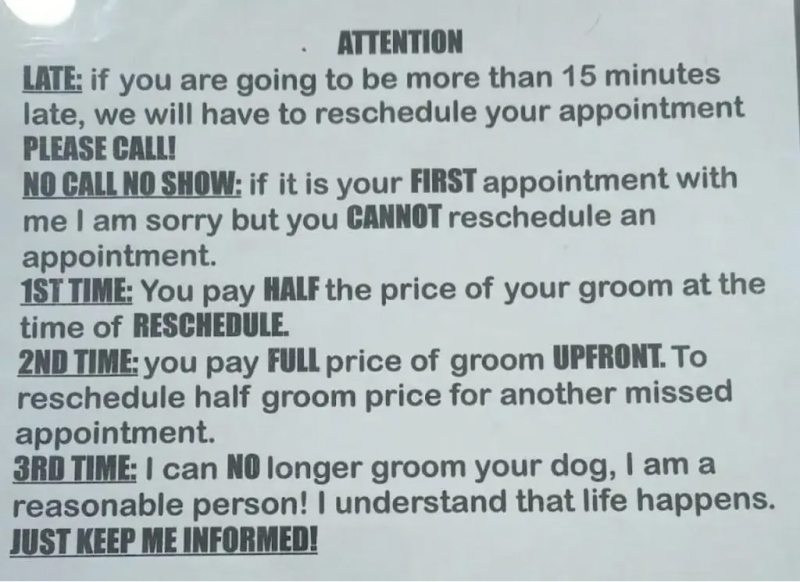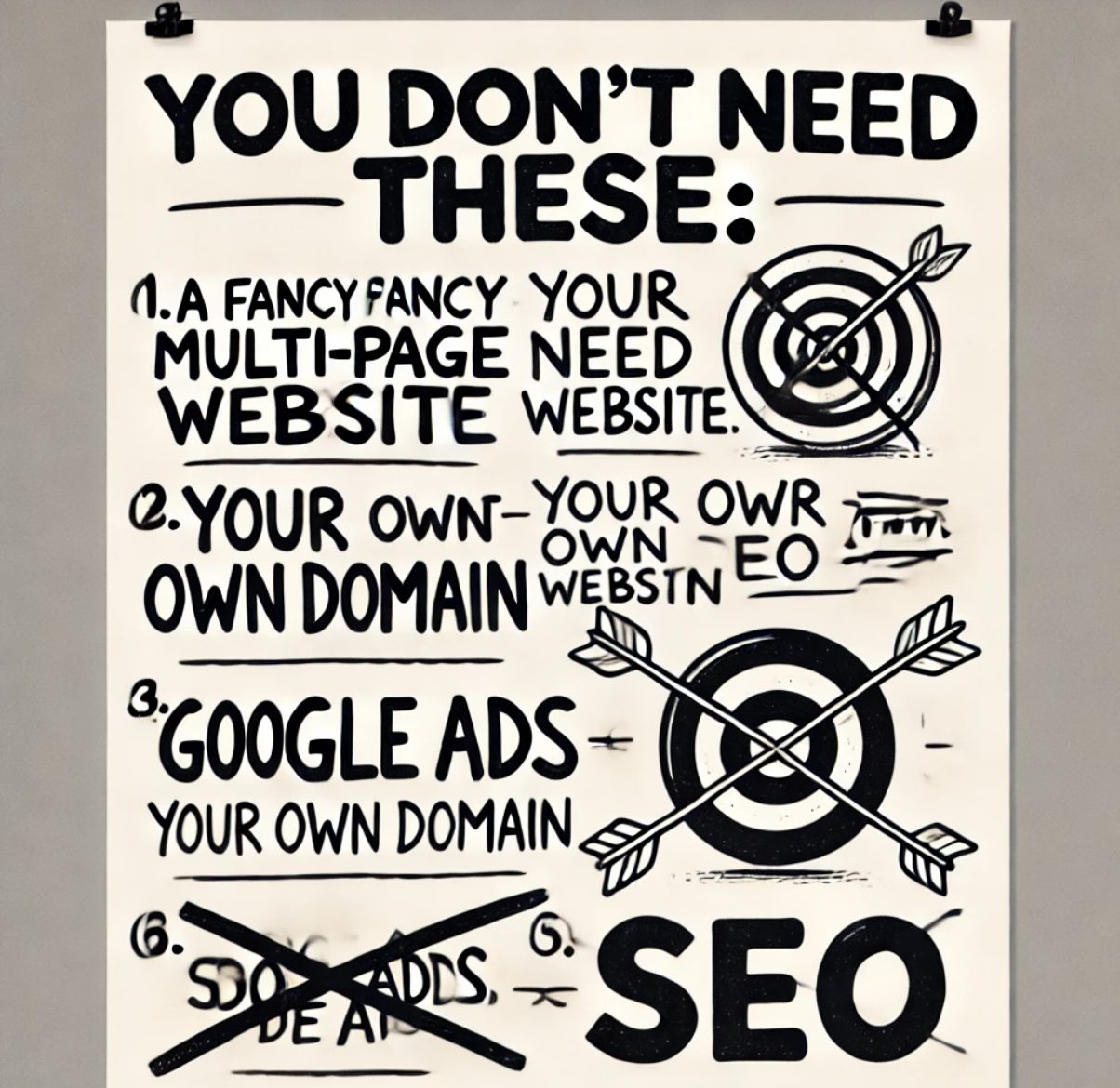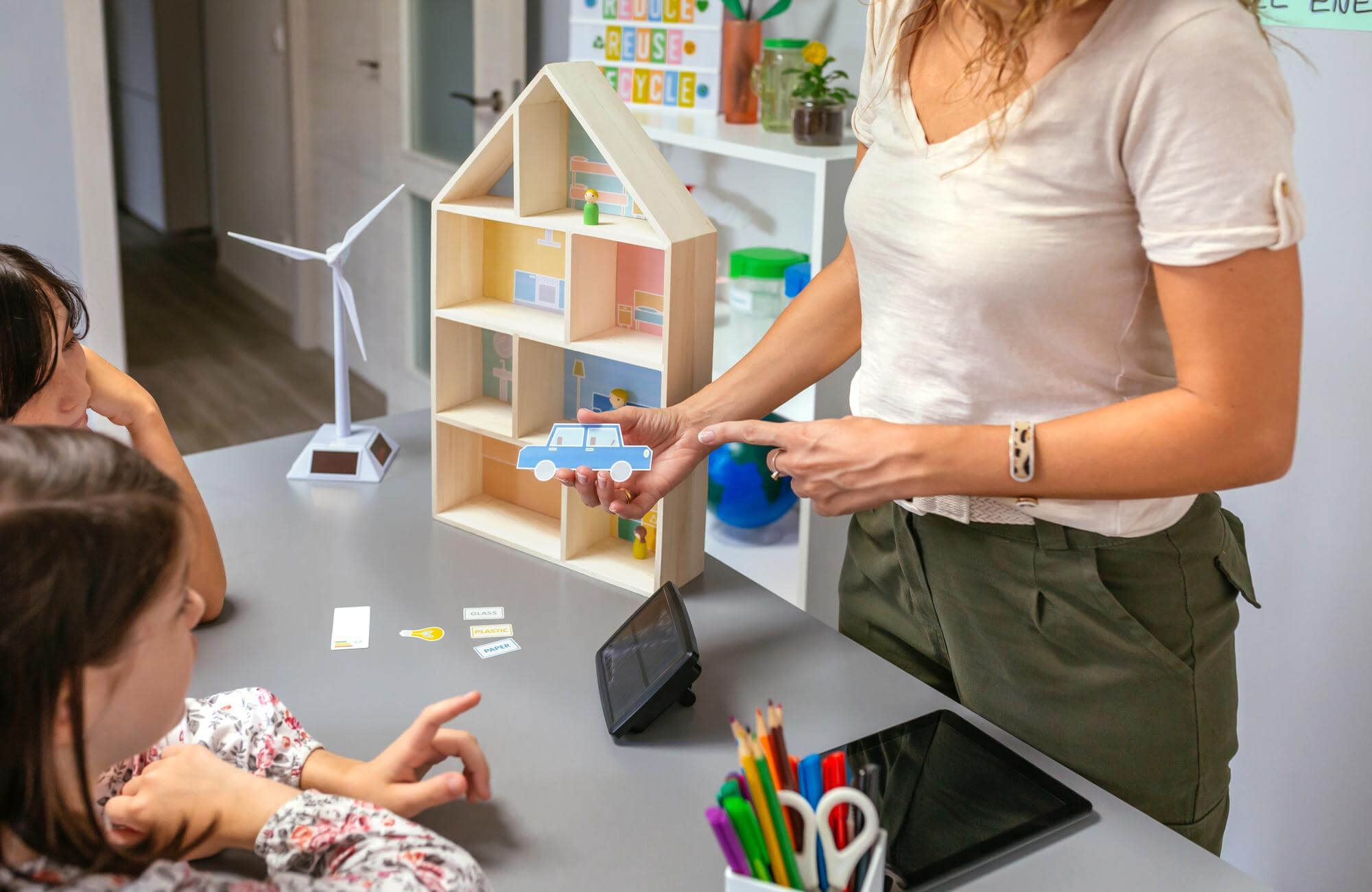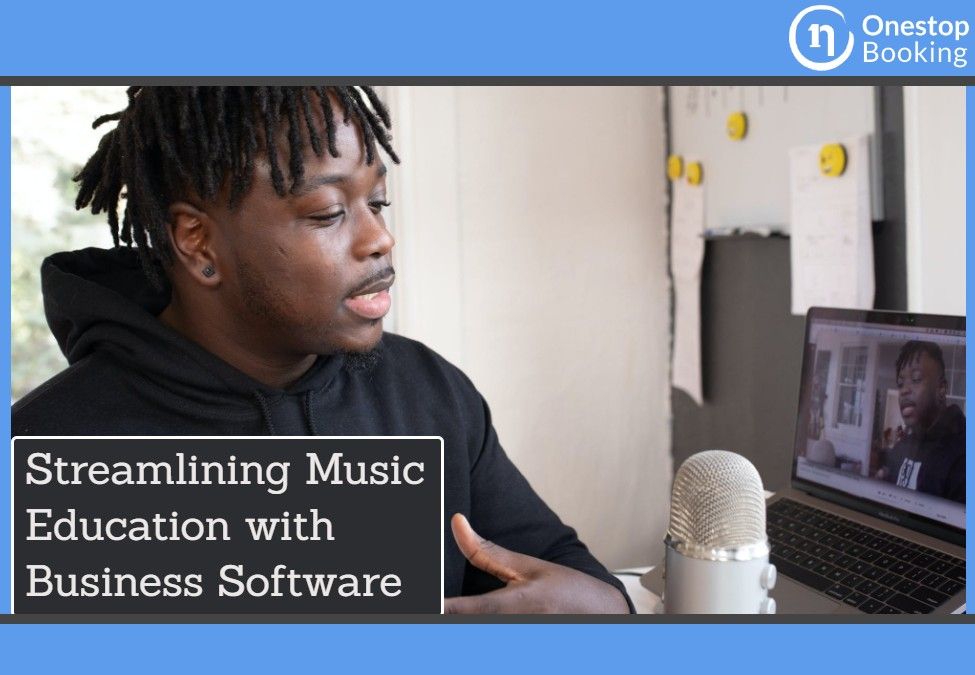If you have been a music teacher for some time, you have witnessed the revolution technology has brought to the classroom over the years. Young and old learners still rely on the wise guidance of music teachers like you, but the role of technology such as music teacher software cannot be understated.
Take for instance the use of music teaching software for children below ten years. Instead of using classical musical notations and teaching methods, teaching software provides friendly characters and integrated gamified learning to make teaching kids easier. Today’s music teacher software can help you teach the youngest learners the basics of rhythm, harmony, and melody much more easily.
This article is organized as a guide and unbiased commentary on the state of technology in music teaching with a focus on music teacher software. We’ll introduce you to the capabilities of cutting-edge music teacher software, suggest ways to integrate them into your curriculum, and so much more.
Overview of Music Teacher Software Today
The use of software or digital aids in music classrooms is not a new thing. From as early as the late 80s, there have been various forms of software designed to make learning music easier with the help of computers and other digital devices.
The Early days of music teacher software
In the early days of music software (between the late 80s and early 90s) primitive music learning software began to emerge even though it was mainly used by diehard computer enthusiasts. This early command line software mainly had simple modules focused on music theory and basic notation.
The Rise of Musical Instructional Tools- 2000s
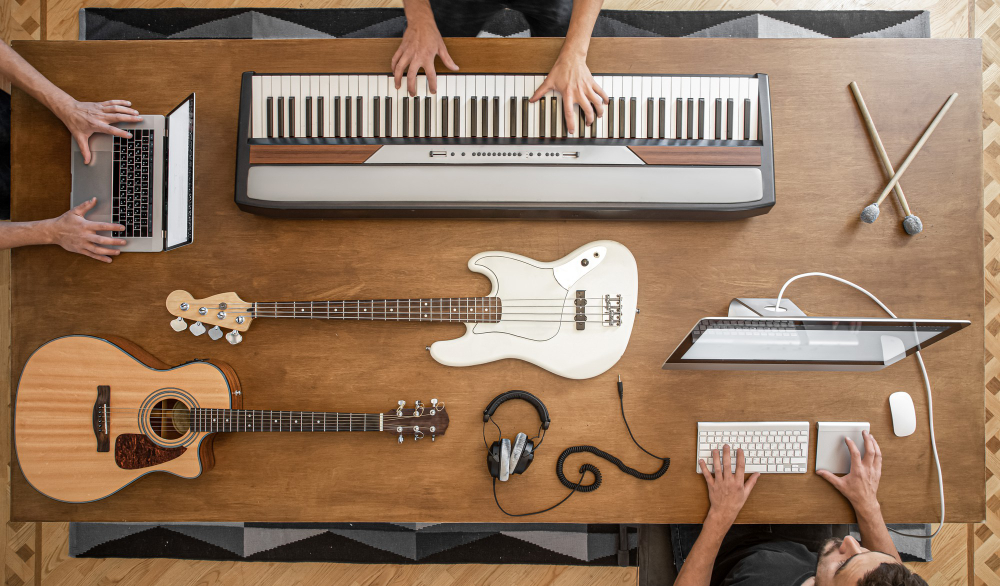
Instructional tools for music came to market in the late nineties to early 2000s and included more interactive music instruction software. They were still quite limited mainly because of low computing power.
This era of software mainly included basic models for classroom music drills, sheet music, and simple tutorials. A good example of learning software from this era was Music Ace which provided games and exercises for learning to read music.
Music Teaching Apps and Games of the 2010 Era
It was not until 2010 that we saw more sophisticated music teachers and learning software that was also available on mobile platforms. The available app stores in this period had many games and apps that claimed to make music education fun.
JoyTunes and Music Tutor are two good examples of popular music applications that came out in this era. JoyTunes was mainly designed to help students practice piano songs through interactive games while Music Tutor provided flashcard-style interfaces to help students memorize chords, notes, and intervals.
The Rise of Adaptable Music Teaching Software- 2015 to date
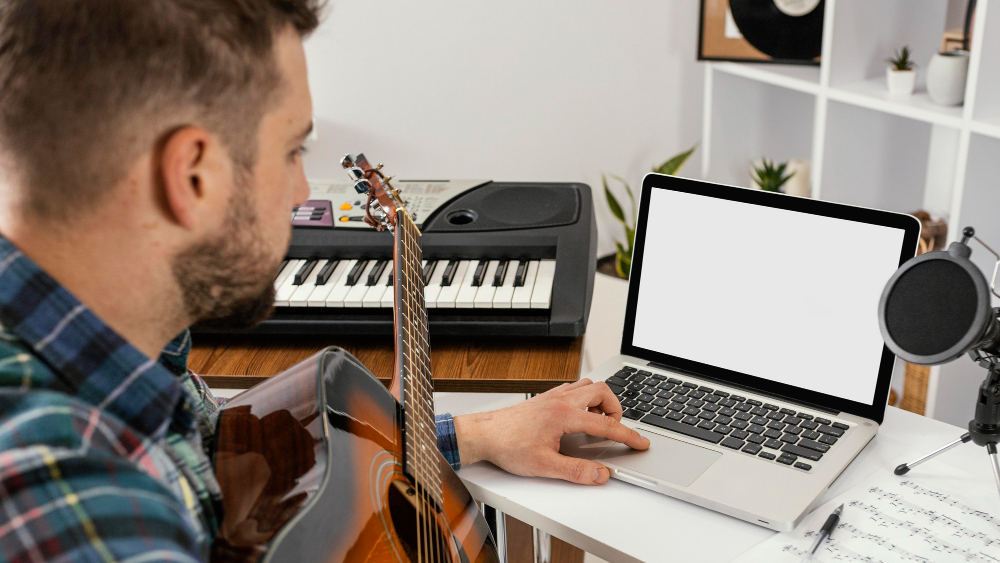
Less than half a decade later, there emerged more sophisticated and adaptable learning aids for music learners and instructors. Music teacher software produced post-2015 incorporated sophisticated algorithms to personalize instruction and give real-time feedback, simulating human interaction.
Good examples of software that gained popularity around 2015 up to today include Yousician and Piano Maestro. Yousician provides real-time feedback during practice through audio signal processing while adapting difficulty to skill level. .
Today’s music teacher software has incorporated state-of-the-art AI, vast catalogs of lessons/songs, and data-driven insights to provide comprehensive and customized education. Features like smart accompaniment, notation editing, and intelligent assessment aid practice.
Music teaching software goes beyond what a well-trained instructor could create as learning materials especially where kids are involved. For instance, one of the popular music teaching software uses avatars like Mozart the mouse to help teach the positing of notes on the staff.
Benefits of Music Teacher Software
Thinking about integrating music teacher software into your classroom? There are many advantages to using these modern tools to aid learning especially if teaching young children. Some of the software we will discuss later comes with all these features in one bundle making it easier and cheaper for you.
The following are some of the key benefits of modern music teacher software for today’s classroom:
1. Streamlined lesson planning and scheduling
Music teacher software comes with lesson planning and scheduling features to help you organize your lessons more effectively especially if you handle multiple classes per day. Planning and scheduling will help you save time and avoid double-booked lessons or skipped topics.
In addition to the primary scheduling and planning features, good music teacher software also includes modules for calendar integration and lesson templates.
Calendar integration
Some of the software we’ve used can integrate with popular calendar and scheduling applications like Google Calendar and Apple Calendar. Synchronization helps keep track of your planned lessons and music activities with students across devices.
Lesson templates
Lesson templates in popular music teacher apps make it easier and faster to ideate and plan lessons more effectively using already populated lesson maps and checklists.
2. Student progress tracking
Student progress tracking on music features gives you valuable information to help track the progress of each student in each of your classes so you can act on it. It allows you to have a much more personalized approach to teaching so you can ensure each learner is making progress as desired.
Progress tracking modules in music teacher software can include:
Performance Analytics
Performance tracking analytics in your music teacher software can help record and analyze the music learning progress of every learner in your class. The insights you get from the analysis will help identify weaknesses and strengths as well as the topics you need to cover or emphasize for optimal learning.
Assessment tools
The software may also come with automated assessment tools that allow students to submit music compositions, vocals, and such. Such capability delivered in a real-time and interactive way can help you identify areas where your students excel and where they need more guidance.
3. Resource libraries
Resource libraries in music instruction software provide materials such as pre-made sheet music, audio tracks, video lessons, and more. You can use these resources to prepare for lessons or create notes and other reusable learning materials for students.
A good example of music teacher software that comes loaded with resource libraries is MakeMusic (formerly SmartMusic). With its vast sheet music library , MakeMusic provides ready-made materials for all kinds of kinds of music lessons and teaching methods.
Some of the most common resource libraries found in the best music teacher software include:
Sheet Music Repositories
These are searchable databases of digital sheet music hosted within the software platform. They can contain millions of printable titles across genres, instruments, and skill levels. You can instantly access arrangements, method books, studies, and more for teaching materials.
Audio and Video Libraries

These are collections of high-quality audio recordings and video demonstrations hosted in the software. These are used to aid student learning and practice. For example:
- Play-along tracks for students to practice with professional accompaniment
- Performance videos demonstrating proper technique and modeling musicality
- Audio examples for ear training, music theory lessons, etc.
- Backing tracks across all genres to solo or improvise over
Rhythm Exercises
Most music teacher software bundles contain a library of interactive rhythm training games and exercises to develop timing and meter competency. They can even be adjusted by difficulty to student skill level.
Music Theory Drills
These are usually flashcards, listening activities, and quizzes focused on teaching essential music theory like scales, chords, and intervals. They are usually adaptive to student needs or teacher-defined.
Accompaniment Options
Some of the software comes with accompaniment options that allow students could practice with adjustable, computer-generated accompaniment tailored to their part and chosen genre/style.
Warm-up Builder
Software warm-up builders can generate personalized warm-up and technique exercises for the student’s instrument, skill level, and problem spots under your supervision.
Repertoire Finder
A software-based repertoire finder is an intelligent searchable database recommending new solo, ensemble, method, and etude pieces based on student progress and technical gaps.
Sight-reading Generator
A sight-reading generator in music teacher applications automatically generates new sight-reading examples at adjustable difficulty levels to improve music-reading skills for students of all ages.
Ear Training Drills
Teaching software for music teachers comes with Interactive modules that you can use to develop aural skills like interval recognition, chord identification, and dictation. Some of the smart modules can adapt in real time based on performance.
Music History Library
These are repositories of materials to aid in teaching musical eras, composers, styles, and more through listening, images, videos, and historical information.
The number and depth of resources or materials you can find varies depending on the type and quality of music software you choose. Nonetheless, these materials and resources reinforce practice efficiency, consistency, and engagement thus expanding your daily instruction toolkit.
4. Communication and collaboration features
Software-based communication and collaboration features allow you to connect to your students on a more personal level; some even help you share learning progress with the parents. The most common communication and collaboration features on popular music teacher software include:
Student-teacher communication
Most of these applications come with inbuilt student-teacher communication tools like chat rooms and message boards to facilitate bi-directional communication. Students can ask questions on the platform, seek clarification, collaborate on group assignments, and share progress updates with the teacher.
Parent involvement
For classes involving minors that need parent involvement and feedback, some of the applications have features that allow teachers to share the progress with registered parents. Parents can monitor their child’s progress on the platform on a real-time basis and communicate with the teachers.
A good example of parent-teacher collaboration and feedback is what you can find on the music teacher platform Music Teacher Notes. MusicTeacherNotes.com provides a parent portal where parents can view lesson notes, practice assignments, and communicate with the teacher regarding their child’s musical development
Ensemble coordination
Music education often involves ensemble playing, where students collaborate to create harmonious music. Some music teacher software, like MakeMusic, offers ensemble coordination tools that enable your students to practice their parts individually while listening to the full ensemble performance.
Software-based ensemble coordination features to aid communication by ensuring that students are familiar with their role within the ensemble and can fine-tune their performance accordingly, even when physically separated from their fellow musicians.
Score-Sharing and Collaboration Tools
Some music teacher software may have features that allow you and your students to share and collaborate on musical scores in real time. For instance, you can upload sheet music, and students can access and annotate it during online lessons.
Software like Flat.io enables collaborative composition, where multiple users can simultaneously edit and comment on a musical score, creating a dynamic and interactive learning experience. This real-time collaboration feature aids communication by facilitating immediate feedback and adjustments.
5. Customized curriculum
Most music teacher software provides a way for you to create a customized curriculum unique to each of your student’s needs, wants, and pace. The software creates personalized learning plans based on abilities.
6. Interactive Tools
Using software in music teaching has the invaluable benefit of Interactive tools that engage students in the learning process through technology like games, quizzes, and immersive lessons. This boosts motivation and retention.
Types of Music Teacher Software
1. Desktop Applications
These are music teacher software that you can download and install locally on a computer or laptop. Good examples are programs like Finale used for notation or Auralia for ear training.
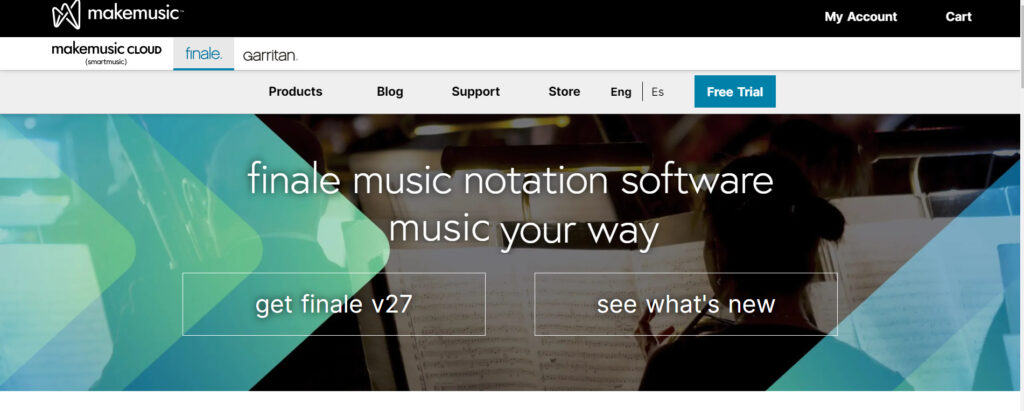
Here are the advantages and drawbacks of using desktop music teacher software today:
Advantages
Full computer processing power – Desktops have more memory, storage, and CPU power compared to mobile devices. This enables software to handle large audio/video files, complex graphics, robust computation, and more.
No internet required – Desktop software can run fully offline once installed, making it reliable without requiring consistent internet connectivity. This makes it useful in areas with poor connection.
Optimized interface – Desktop software is designed specifically for large screens therefore providing more detailed graphic interfaces, multiple windows, and complex menus not feasible on small mobile screens.
Peripheral connectivity – Plugging devices like MIDI keyboards, sheet scanners, drawing tablets, controllers, and microphones into a desktop computer can integrate tightly with the software.
Standalone functionality – Desktop music teacher software does not rely on a secondary platform. The software is self-contained rather than needing a web ecosystem or separate host program.
Disadvantages
Lack of portability – Desktop computers are not portable which makes software installed to be confined to use on one device in a fixed location rather than being accessible on the go.
Manual updates – New versions of desktop applications must be manually downloaded rather than centralized updates pushed automatically. This can make supporting multiple computers tedious.
Privilege requirements – Installation often requires admin access privileges on the computer, which can be a problem if you are using a managed computer in a school or organization- you’ll have to talk to the IT administrator every time you need to install a new software.
Hardware dependence – Some desktop applications may require specific operating systems, graphics cards, ports, or processing capabilities only available on some desktops. Please talk to an expert or IT people in your organization if you are unable to install software on your desktop computer.
Isolation – Data and content you generate on your local music teacher applications tend to be siloed locally rather than easily shared or synced across devices. Collaborating requires manual steps like exporting and uploading online or to an external storage device.
2. Web-Based Music Teacher Applications
This is software accessed over the internet through a web browser. Goof examples are online platforms like MusicFirst Classroom and Noteflight for music notation.
Advantages
Accessibility – Web-based applications are available on any device with an internet browser, so can be accessed from anywhere at any time on smartphones, laptops, tablets, etc.
Automatic updates – You don’t need to worry about updating your software as new features and fixes are deployed centrally and updated seamlessly.
Cloud data – Your music content is synced and backed up in the cloud automatically, enabling access to data from any location or device you give access to. This can be great to provide revision resources and promote collaboration among students.
Ease of sharing – Related to the previous point, web-based content can easily be distributed and collaborated on with other teachers or students within a cloud platform.
No installation required – Being browser-based, no download or installation is required for these applications.
Disadvantages
They require internet -You need a constant internet connection to access the software, limiting use in areas without consistent connectivity.
Browser limitations – Web apps are reliant on web browser capabilities, which may lack access to full device functionality or limit tool complexity.
3. Mobile Apps
These are music-teaching apps downloaded onto mobile devices like smartphones and tablets. Examples are MakeMusic, Yousician, and Music Tutor.

Advantages
Portability – You can access mobile apps on smartphones and tablets from anywhere, enabling use on the go rather than being confined to a specific device in one spot.
Offline functionality – Many mobile apps can download content for offline use when internet access is not available.
Touch interfaces – Mobile apps are designed around touch screens with intuitive, interactive controls tailored specifically for these devices.
Device integration – Can leverage built-in mobile device features like microphones, cameras, gyroscopes, and processors to enable innovative functionality.
Instant access – Mobile devices are turned on throughout the day, so apps can be accessed instantly as needed rather than needing to boot up a specific device.
Streamlined design – Mobile interfaces are optimized for smaller screens with simplified, focused experiences rather than complex multi-window workflows.
Disadvantages
Limited screens – Smaller smartphone and tablet screens restrict the ability to view large amounts of information at once and can impede complex interfaces.
App fatigue – Continual app updates and notifications lead to overload. It is easy to tire of constantly checking and managing many apps.
Processing tradeoffs – While powerful, mobile device processors still lag behind desktops/laptops which limits the ability to handle robust music composition programs.
Plug-In Apps
This is software that runs as a plug-in within a host program, like a digital audio workstation. Examples are apps like Auto-Tune or Guitar Rig, both of which can be used in music instruction.
The advantage of plugin apps is the fact that they offer tightly integrated functionality thus leveraging the capabilities of the host software. One big disadvantage they have is that they only work within a host program. They also generally offer narrow functionality vs. broader teaching tools.
4. Hybrid Models
These are music teaching applications combining elements of the above models, like a desktop app linked to a web platform. Examples are TakeLessons or Skoove which have downloadable apps or extensions that integrate with online student profiles.
Advantages
Hybrid apps provide flexibility to take advantage of multiple platforms. They also provide the ability to access tools from anywhere there is a good internet connection.
Disadvantages
One big advantage of hybrid music teacher applications is users tend to have a disjointed experience moving between platforms. After using the desktop app for a while, having to switch to the web-based version can be a problem.
Tips for Implementing Music Teacher Software
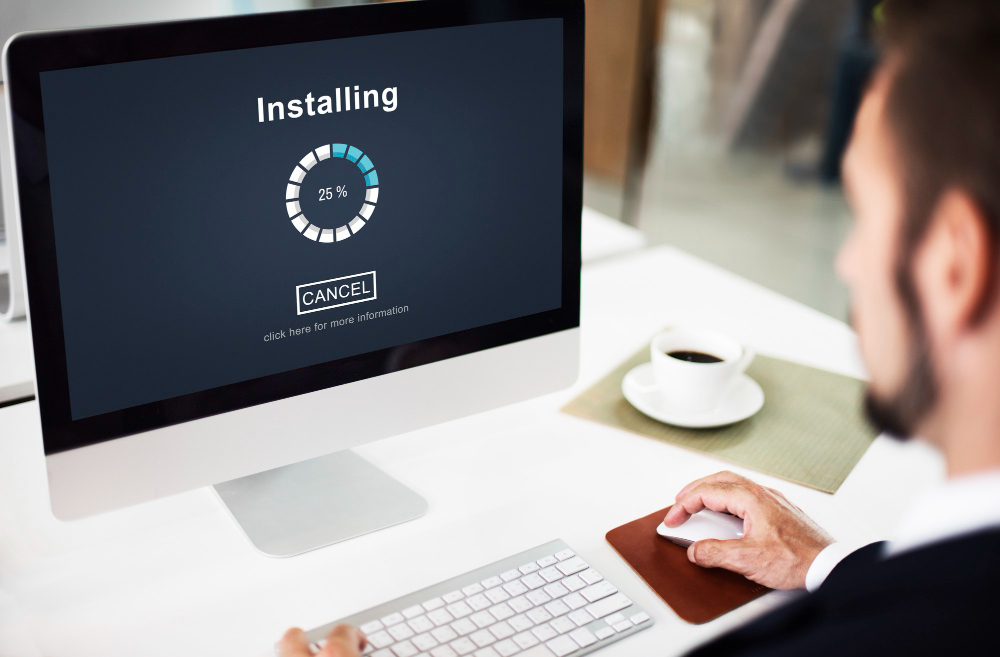
Training and Onboarding
Implementing music teacher software effectively requires thorough training and onboarding for both teachers and students. As a first step, make sure you offer comprehensive training sessions to help instructors understand how to use the software’s features for lesson planning, score sharing, and communication.
Your students should also receive guidance on accessing resources, scheduling lessons, and interacting with their instructors through the platform. A well-structured onboarding process ensures that all users are comfortable with the software, maximizing its benefits for communication and collaboration.
Data Security and Privacy Considerations
We suggest prioritizing data security and privacy when implementing a music teacher platform. These are critical for protecting sensitive information such as student records, payment details, and communication logs.
Ensure that the software you select complies with relevant data protection regulations (e.g., GDPR, HIPAA) and provides robust encryption methods for secure data transmission. Also, educate users on best practices for maintaining their privacy within the platform, such as setting strong passwords and understanding privacy settings.
Aligning Software with Teaching Goals and Curriculum
To effectively aid communication and collaboration, the chosen music teacher platform should align with your teaching goals and curriculum. For example, if your curriculum emphasizes music theory, ensure that the software includes relevant resources and tools for teaching and assessment.
Integration with Existing Tools and Systems
When implementing a music teacher platform, think about how it can seamlessly integrate with your existing tools and systems. The chosen software should work alongside or integrate with these tools to minimize disruption and streamline the workflow.
For example, if you regularly use a digital audio workstation (DAW) for recording, choose a platform that allows for easy export and import of audio files between the DAW and the teaching platform, enhancing communication through the sharing of audio samples.
Top Music Teacher Software Solutions
1. My Music Lessons
Price: £9.95
As a music educator, My Music Lessons could be your all-in-one solution to organize lessons, connect with students, and get paid. It comes with features like two-way messaging, student booking, payment processing, and gift vouchers that aim to help you manage operations.
Features
- Lesson scheduling and student booking
- Instant messaging for teacher-student communication
- Payment processing and invoice management
- Gift voucher creation
- Homework planning tools
- Teacher profiles and media pages
2. Jackrabbit Class
Price: Plans starting at $49/month
This music teacher application can simplify your school’s operations with this robust class management system designed for music educators. Jackrabbit Class provides tools to handle registration, billing, reporting, scheduling, skill tracking, staff management, and parent communication. It has a customized portal you can use to enable self-service class enrollment and keep parents engaged.
Features
- Online student registration and enrollment
- Payment collection and processing
- Data reporting and analytics
- Calendar management
- Student skill tracking
- Staff time clocks and payroll integration
- Parent portals for communication
3. NoteFlight Learn
Price: $69 annually
This software is designed to transform your music theory and composition instruction with this online platform built specifically for music teachers. Noteflight Learn It comes with an intuitive interface that allows you to easily create exercises and assignments while performance assessment tools give students real-time feedback for skills development. interactive.
Features
- Music notation and composition tools
- Library of interactive sheet music
- Custom assignment and exercise creation
- Real-time student performance assessment
- Skill ratings and feedback for students
- Class and group management
- Integration with school learning platforms
4. MusicFirst Classroom
Price: $11 annually
This is a unified online platform for music classrooms. You can use MusicFirst Classroom to access integrated software, build digital portfolios, manage grades, share resources, and communicate. Curated learning content, standards-aligned courses, and custom assessments aim to support diverse teaching needs.
Features
- Gradebook with assessment options
- Shared calendars
- Integrations with music education software
- Library of courses, units, and lesson plans
- Student portfolio management
- Communication and collaboration tools
5. Auralia 7
Price: $169 one-time for professional teachers
This highly customizable software allows you to engage with students in effective ear training. Auralia 7 aims to develop core musicality through interactive lessons on topics like intervals, rhythm, harmony, and sight singing. Quizzes provide instant feedback to reinforce concepts
Features
- Customizable lessons and exercises
- Units covering intervals, rhythm, harmony, etc.
- Interactive quizzes with instant feedback
- Worksheets and assessments
- Student progress tracking
- Curriculum customization options
Integrating Music Teacher Software into Your Teaching
Setting up and getting started
Take time to fully explore the music teacher software, set up your classes/students, organize materials, and learn the key features before launching. You can start slowly with basic uses, and build up as you and students get accustomed to the tools. Also, get access to training resources from the provider to help you as you get started.
Best practices for maximizing benefits
Here are some best practices to adopt to maximize the benefits of your chosen music teacher platform:
Link software activities directly to curriculum goals – Ensure that student tasks and interactions with the software tie directly into the learning objectives, standards, and skills you want them to develop. This provides focus and relevance.
Establish routines for use – Set regular times and expectations for utilizing the software, such as warm-ups or closing lessons. Doing these ingrains use into daily procedures. Start establishing routines from the very first classes.
Model how to use it – Don’t just tell students how to use the software features. Project your screen and model the workflows, interactions, and thought processes when completing activities. Teach them how to leverage the tools.
Experiment with advanced features – Get comfortable with the software yourself so you can guide students into more advanced capabilities. Discover creative ways to employ tools that go beyond surface-level use.
Stay organized – Create structures to manage student accounts, login info, materials assigned, etc. Organization is key for monitoring meaningful use of the software, not just random fun.
Get student feedback – Ask students directly what features they like, what is confusing, and what else they want from the software. Keep improving your integration based on their input.
Be patient as you adjust – Don’t expect perfect integration immediately. It takes repeated experimentation over many lessons for both you and students to optimize leveraging the tools.
Lesson planning tips – Build lessons around software activities, align to skills taught, scaffold progressively, blend with non-technology tasks, incorporate software practice times, and customize resources to student levels.
Communication strategies – Provide resources guiding parents on how students use the software at home. Give students ways to ask questions within the platform. Share access with teaching assistants and colleagues.
Overcoming challenges – Troubleshoot technical issues promptly, offer refreshers on using the software, incentivize reluctant students, and don’t over-rely on the technology or force fit it. Find the right balance through trial and error.
Future Trends in Music Teacher Software
The capabilities of music learning software will expand dramatically as technologies like artificial intelligence, virtual reality, and IoT devices evolve. AI and machine learning will enable programs to provide fully customized and adaptive instruction based on an understanding of each student’s strengths, weaknesses, interests, and ideal pace.
Virtual and augmented reality will create immersive interactive experiences that stimulate multiple senses, providing access to masterclasses, simulations, and collaboration across distances. Integrating gesture recognition, haptics, brain-sensing wearables, and more will detect nuances in technique and engagement difficult for current software.
While significant challenges around access, privacy, and human connection remain, these innovations will unlock new dimensions in personalized, and enjoyable music education on a global scale. As these technologies mature, music teacher software has immense potential to enhance how we teach, practice, create, and share music.
Final Remarks
Music teacher software provides invaluable advantages that support student engagement, motivate practice, streamline administration, and enrich teaching. While technology will never replicate the artistry and interpersonal connections at the heart of music education, tools like these can free educators to focus on what matters most.
The potent combination of software accessibility and educator passion has the power to advance musical opportunities for students everywhere. Music teachers should embrace quality software as part of their expanding toolkit, finding ways to blend its benefits into their unique teaching dynamic. The future of music education looks brighter than ever, full of possibilities to inspire creativity and joy through the universal language of music.
Image Credit:
- Image by pvproductions on Freepik
- Image by Freepik
- www.makemusic.com
- Image by garetsvisual on Freepik
- Image by Freepik
- Image by rawpixel.com on Freepik


